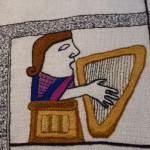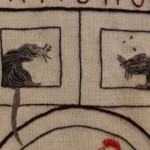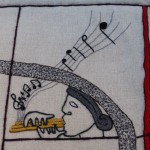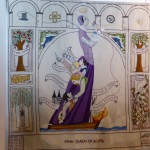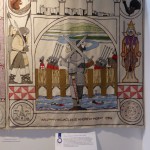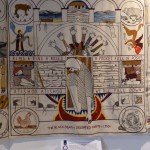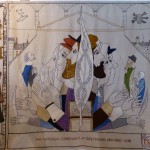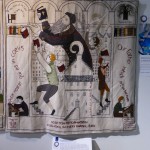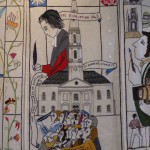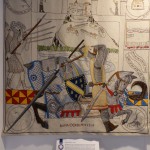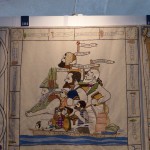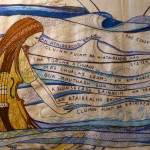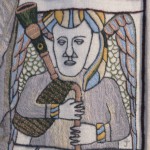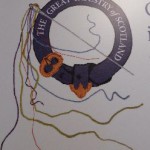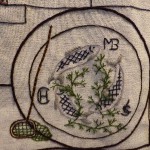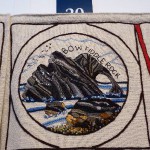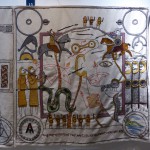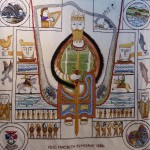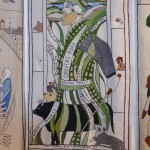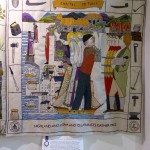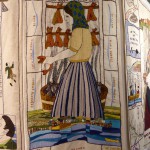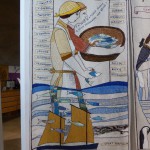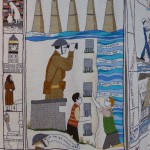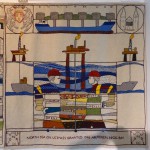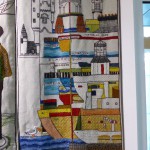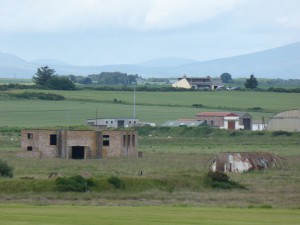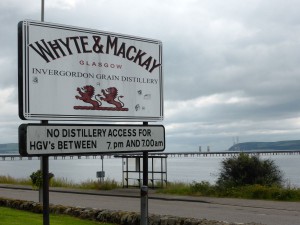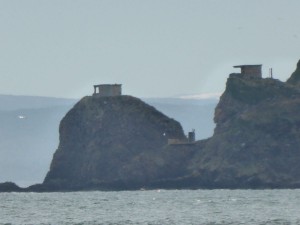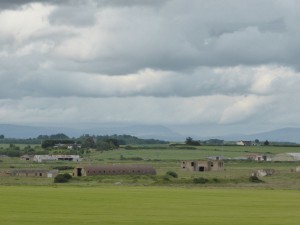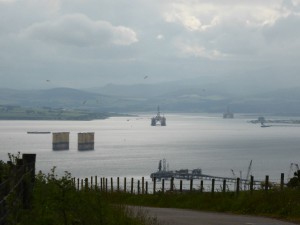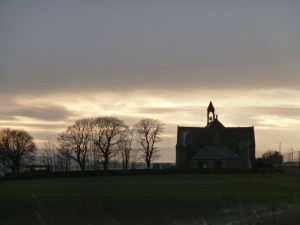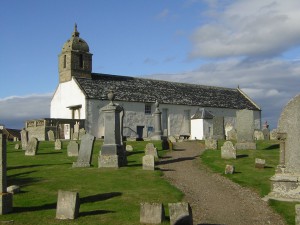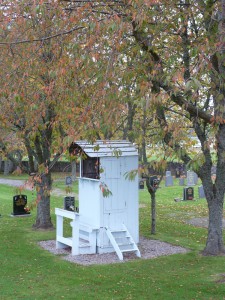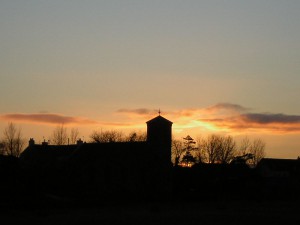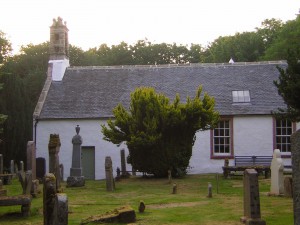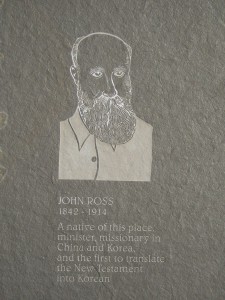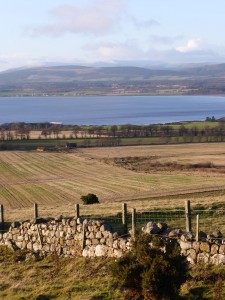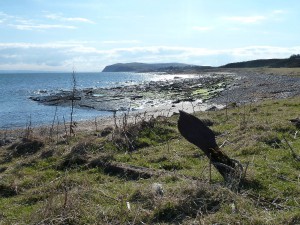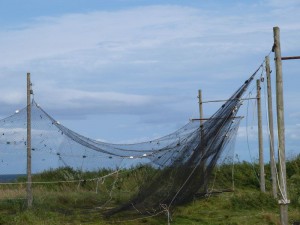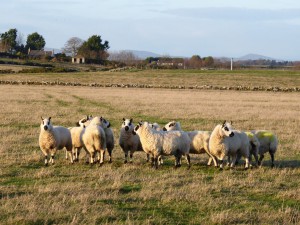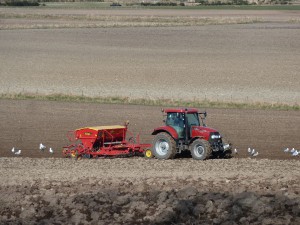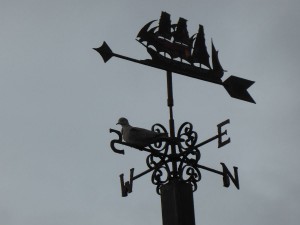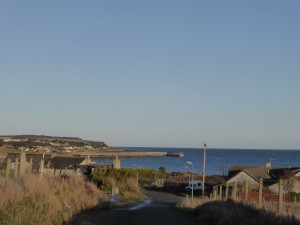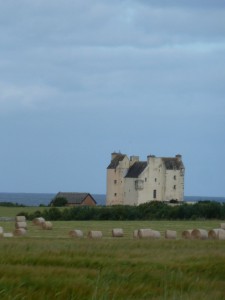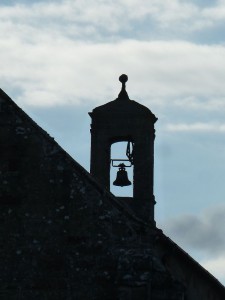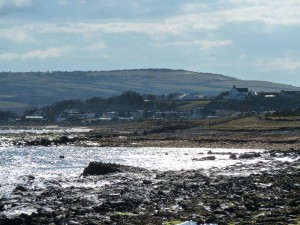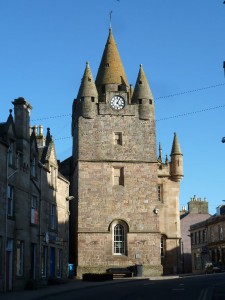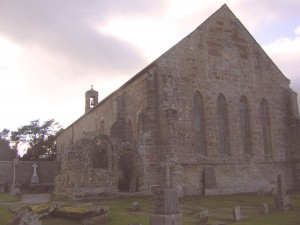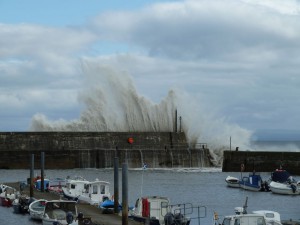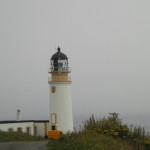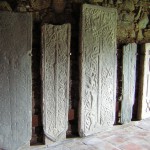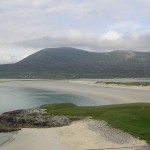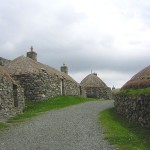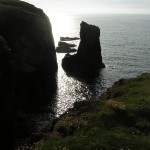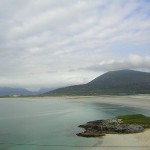Leòdhas is na Hearadh os cionn na Roinn Eòrpa

Calanais
A thaobh cruinn-eòlais, chan e ach aon eilean a th’ ann an Eilean Leòdhais is na Hearadh, ged a bhios sinn a’ bruidhinn mun deidhinn mar dhà eilean air leth. Tha dà choimhearsnachd eadar-dhealaichte ann ge-tà, gun teagamh, agus fèin-aithne làidir aig gach tè, is còmhstri chàirdeil eadarra. Ach uaireannan tha e feumail gabhail ris an fhirinn chruinn-eòlasach, gu h-àraidh nuair a bhios duaisean rin coisinn!
Tha fios againne gu bheil eileanan na h-Alba am measg na feadhna as bòidhche air an t-saoghal, ach tha e gu sònraichte tlachdmhor nuair a bhios buidhnean eadar-nàiseanta mar TripAdvisor, aig a bheil buaidh mhòr anns a’ choimhearsnachd luchd-siubhail, a’ tighinn chun an aon cho-dhùnaidh. Tha iad dìreach air na liostaichean 2014 aca fhoillseachadh, agus am measg eileanan na Roinn Eòrpa ‘s e eilean Leòdhais is na Hearadh a tha anns a’ chiad àite, os cionn eileanan nas ainmeile leithid Naxos, Santorini agus Capri:
Priomh Eileanan Eòrpach
1. Leòdhas ‘s na Hearadh, Alba
2. Naxos, a’ Ghrèig
3. Eilean Ghòso, Malta
4. Arcaibh, Alba
5. Milos, a’ Ghrèig
6. Cephalonia, a’ Ghrèig
7. Santorini, a’ Ghrèig
8. Eilean Chapri, an Eadailt
9. Eilean Mhuile, Alba
10. Paros, a’ Ghrèig
Chì sinn gu bheil Arcaibh agus Eilean Mhuile anns a’ chiad deich cuideachd – tha an luchd-siubhail a bhios a’ cleachdadh TripAdvisor gu math deidheil air Alba, gu follaiseach. Anns an liosta Bhreatannach, tha sia eileanan Albannach anns a’ chiad deich: Leòdhas is na Hearadh anns a’ chiad àite a-rithist, Arcaibh (2), Muile (3), an t-Eilean Sgitheanach (5), Eilean Arainn (6) agus Ìle (8). Agus fiù ‘s anns an liosta nam prìomh 10 eileanan san t-saoghal, tha Leòdhas is na Hearadh anns a’ choigeamh àite, air thoiseach air àiteachean tropaigeach mar Mhadagascar no Thailand.
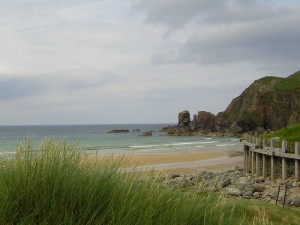
Dal Mòr
Ach carson a tha na h-eileanan againn cho soirbheachail gu h-obann? Thèid na liostaichean a chur ri chèile a rèir beachdan luchd-tadhail (nam ball TripAdvisor) mu àiteachan-fuirich, seirbheisean mar taighean-bìdh agus gu h-àraidh àireamh agus càileachd de chinn-uidhe turasachd. Chan urrainn dhomh fhìn bruidhinn mu thaighean-òsta agus taighean-bìdh spaideil – ‘s e B&Ban agus cafaidhean a bhios mise a’ cleachdadh nuair a bhios mi a’ siubhal, agus tha iadsan glè mhath – ach tha iad ann, a rèir coltais. Bidh na taighean-bìdh a’ cleachdadh toradh ùr à muir, monadh is achadh, agus tha cliù mòr aig biadh sònraichte ionadail mar mharag dhubh à Steòrnabhagh.
Faodaidh mi aontachadh mu dheidhinn nan ceann-ùidhe tarraingeach, ge-tà. ‘S e dualchas sònraichte nàdarra, eachdraidheil agus cultarach a tha aig na h-Eileanan Siar (agus aig Arcaibh agus na h-eileanan eile cuideachd), agus bidh luchd-tadhail a’ gabhal fìor thlachd às. ‘S e Bliadhna Nàdair na h-Alba a bh’ ann an 2013, le mòran sanasachd air an teilebhisean agus an eadar-lìon, agus sreath BhBC ‘Hebrides – Islands on the Edge’, a bhrosnaich ùidh anns an àrainneachd a tha gu ìre mhath gun mhilleadh anns na h-eileanan.

Losgaintir
Tha pailteas de dh’fhiadh-bheatha aca leithid eòin-chreachaidh, fiadh agus ròin, agus fiù ‘s mucan-mara. Tha seallaidhean mìorbhaileach ann cuideachd, eadar na creagan garbha taobh Nis, na baighean bòidheach mar Dalmòr taobh an iar Leòdhais, agus Ùig, far an deach Fir-Taileisg Leòdhais a lorg, agus na tràighean rìomhach, fada is falamh, anns na Hearadh, leithid Losgaintir.
A thaobh eachdraidh, tha tuilleadh ‘s a’ chòir ri fhaicinn. Ann an Leòdhas feumaidh gach neach-tadhail a dhol do na làraichean àrsaidh drùidhteach a th’ anns na Tursachan Chalanais agus Dùn Chàrlabhaigh, agus do Bhaile nan Geàrrannan gus na ‘taighean dubha’ agus an dòigh-bheatha tradiseanta fhaicinn. Anns na Hearadh ‘s e Eaglais Ròghadail a tha a’ tighinn a-steach orm an toiseach – togalach brèagha e fhèin agus làn chlachan-uaighe àrsaidh agus leacan snaighte tarraingeach eile.

Ròghadail
Agus tha cultar sònraichte gu leòr ann cuideachd. Tha coimhearsnachdan Gàidhlig ann fhathast, tha Radio nan Gàidheal agus MG Alba stèidhichte ann an Steòrnabhagh, agus tha ceòl agus seinn tradiseanta fhathast làidir – rugadh is thogadh mòran de na seinneadairean Gàidhlig as fheàrr ann an Leòdhas, m.e. Isbeal NicAsgail agus Màighread Stiùbhairt, agus tha ginealach ùr dhiubh a’ tighinn suas cuideachd – seinneadairean òga mar Chatrìona Watt agus Isbeal Ann Mhàrtainn a bhios a’ cumail an dualchas beò. Agus chan fhaod sinn an t-salmadaireachd gun choimeas anns na h-eaglaisean clèireach a dhìochuimneachadh, rud a dhrùidheas gu mòr air luchd-tadhail, agus na fèisean nas ùire m.e. Fèis Cheilteach Innse Gall .
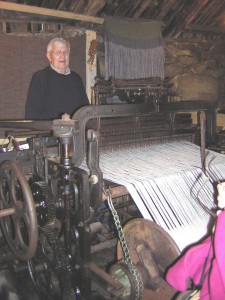 Tha obraichean tradiseanta mar iasgach, croitearachd agus clò-Hearach cudromach fhathast san latha an-diùgh, agus tradisean ainmeil na seilge-guga ann an Nis, agus tha na gnìomhachasan crùthachail agus dùthchail a’ fàs – ealan, dràma, obair-làimhe, biadh speisealta ionadail amsaa. Tha fiù ‘s taigh-staile ùr ann, ann an Ùig, Abhainn Dearg.
Tha obraichean tradiseanta mar iasgach, croitearachd agus clò-Hearach cudromach fhathast san latha an-diùgh, agus tradisean ainmeil na seilge-guga ann an Nis, agus tha na gnìomhachasan crùthachail agus dùthchail a’ fàs – ealan, dràma, obair-làimhe, biadh speisealta ionadail amsaa. Tha fiù ‘s taigh-staile ùr ann, ann an Ùig, Abhainn Dearg.
Ach tha mi fhìn den bheachd gur e ‘blas’ sònraichte nan Eilean air fad a tha cho tairraingeach – an solas, an aimsir, na dathan, an aonaranachd. Tha mòran daoine – ann am Breatainn is àiteachan eile – sgìth de làithean-saora ‘pacaid’ àbhaisteach, agus de chinn-uidhe a tha ro dhùmhail agus teth. Tha iad a’ fàs nas deidheile air dùthchannan taobh a tuath na Roinn Eòrpa, leithid Nirribhidh no Innis Tìle.
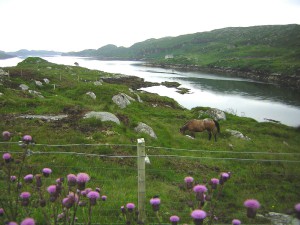
na Hearadh
Aig feasgar-leughaidh ann an Inbir Nis bliadhna no dhà air ais bha Peter May, ùghdar a sgrìobh The Lewis Trilogy (agus an siabann telebhisein Gàidhlig ‘Machair‘ ron a sin) ag ràdh nach robh ùidh sam bith aig foillseachairean anns a chiad leabhair den trilogy aige, The Black House, nuair a sgrìobh e e, o chionn gu bhith fichead bliadhna. ‘S e nobhail-mhuirt a th’ ann, ach a-rèir choltais bha Eilean Leòdhai mar àite-sgeòil “ro ghruamach”, cha robh e “romànsach gu leòr”. Ach as dèidh soirbheas nan leabhraichean ‘Nordic noir’, m.e. le Henning Mankell no Stieg Larsson, bha àiteachan iomallach, aonaranach, le àrainneachd sònraichte, a’ fàs na bu tharraingiche do luchd-leughaidh – agus do luchd-siubhail.
Cò aig a bha dùil gun tigeadh a’ phiseach seo air cliù Eilean Leòdhais is na Hearadh?
*********************************************************************
Lewis and Harris top European Islands list

Nis / Ness
Geographically speaking, Lewis and Harris are one single island, even though we tend to talk about them as two separate ones. They are certainly two different communities with strong senses of identities, though, with a friendly rivalry between them. But sometimes it’s convenient to go along with the geographical facts, especially when there are prizes to be won!
We ourselves know that the Scottish islands are amongst the most beautiful in the world, but it’s particularly gratifying when international groups like TripAdvisor, which has widespread influence on the independent travel community, come to the same conclusion. They have just published their 2014 lists, and the island of Lewis and Harris make the first place in the Top Ten European Islands, ahead of more famous islands such as Naxos, Santorini and Capri.
TripAdvisor’s Top 10 European islands
1: Lewis and Harris, Scotland
2: Naxos, Greece
3: Island of Gozo, Malta
4: Orkney Islands, Scotland
5: Milos, Greece
6: Cephalonia, Greece
7: Santorini, Greece
8: Island of Capri, Italy
9: Isle of Mull, Scotland
10: Paros, Greece
We see that Orkney and Mull are in the top 10 too – TripAdvisor’s members are evidently very fond of Scotland. There are also six Scottish islands in the British Islands Top Ten: Lewis and Harris in first place again, Orkney (2), Mull (3), Skye (5), Arran (6) and Islay (8). And even in the World Islands Top Ten, Lewis and Harris are in fifth place, ahead of some in tropical places like Madagascar and Thailand.

na Hearadh / Harris lochan
But why are our islands suddenly so successful? The lists are based on the feedback of travellers (TripAdvisor members) regarding accommodation, services like restaurants, and especially the number and quality of visitor atttractions. I can’t comment myself on smart hotels and restaurants – I tend to use B&Bs and cafés when I’m travelling – but evidently they exist. The restaurants use fresh produce from sea, moor, and field, and local specialities like Stornoway black pudding have quite a reputation.
I have to agree about the visitor attractions, though. The Hebrides have a very special natural, historical and cultural heritage (as do Orkney and the other islands), and visitors really appreciate it. 2013 was the Year of Natural Scotland, with a great deal of advertisng on TV and the internet, and the BBC series Hebrides – Islands on the Edge stimulated interest in the islands’ largely unspoiled environment.

na Hearadh
They have a wealth of wild-life, such as birds of prey, deer, seals, even whales. There are marvellous views to be had too, between the wild crags of Ness, the lovely bays of western Lewis such as Dalmore, and Uig, where the Lewis Chessmen were found, and the majestic beaches of Harris, long and empty, like Luskentyre.
As regards history, there is more than enough to see. Every visitor to Lewis has to go to the impressive ancient sites of the Callanish Stones and the broch of Carloway, and to the ‘black houses’ of Na Geàrrannan village to see how people used to live. In Harris it’s Rodel Church that first springs to mind – a lovely building in itself, and full of ancient gravestones and other fascinating carved slabs.
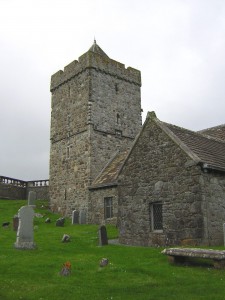
Ròghadail / Rodel
There is also a remarkable cultural heritage. There are still Gaelic-speaking communities, Radio nan Gàidheal and MG Alba are based in Stornoway, and traditional music and song is strong here. Many of the best Gaelic singers were born and bred in Lewis, e.g. Ishbel MacAskill and Margaret Stewart, and there’s a new generation coming up – young singers like Catriona Watt and Isobel Ann Martin, who are keeping the tradition alive. We shouldn’t forget the unique psalm-singing of the Presbyterian churches either, something that makes a powerful impression on visitors, and the more recent festivals, like the Hebridean Celtic Festival (HebCelt).
Traditional occupations like fishing, crofting and Harris tweed are still important today, not to mention the famous guga-hunt of Ness, and creative and rural enterprises are growing – art, drama, handicrafts, local food specialities etc. There is even a new distillery at Uig, Abhainn Dearg (Red River).

Dùn Chàrlabhaigh / Carloway broch
But I myself think that it’s the special ‘flavour’ of the islands as a whole that is so fascinating – the light, the climate, the colours, the solitude. Many people, in Britain and elsewhere, are tired of conventional ‘package’ holidays and of crowded, hot tourist destinations. They are beginning to prefer Northern European countries, like Norway and Iceland. At a reading in Inverness a year or two ago, Peter May, author of The Lewis Trilogy (and of the Gaelic soap Machair before that), said that when he wrote the first book in his trilogy, The Black House, almost 20 years ago, there was no interest at all in it from publishers: although it’s a crime novel, the Lewis setting was “too stark”, “not romantic enough”. But since the success of the ‘Nordic noir’ thrillers, such as those by Henning Mankell and Stieg Larssen, remote, lonely places with a special atmosphere have become more attractive to readers – and to travellers.
Lewis and Harris – an island whose time has come?
Here’s a song in praise of Eilean Fraoich – Island of Heather, as Lewis is known in song, written by William Mackenzie of Lewis (1857-1907), sung here by the trio Mackenzie, well-known musical sisters from Gress in Lewis: https://www.youtube.com/watch?v=TM8RA64cbGs
Update March 2015: our nearest relative in North America, Gaelic-imbued Cape Breton Island in Nova Scotia, Canada, has just been voted best island in North America and 3rd best island world-wide, ahead of Hawaii! http://www.macleans.ca/society/life/the-third-best-island-in-the-world/
These Gaels and their islands are just irresistible! 🙂
Here I am reading this blog (slightly adapted) in April 2015 on Guth nan Gàidheal, US internet radio Gaelic programme, from about 28:30 minutes in.
http://gng.acgamerica.org/2015/04/12/asa4/
********************************************************************
